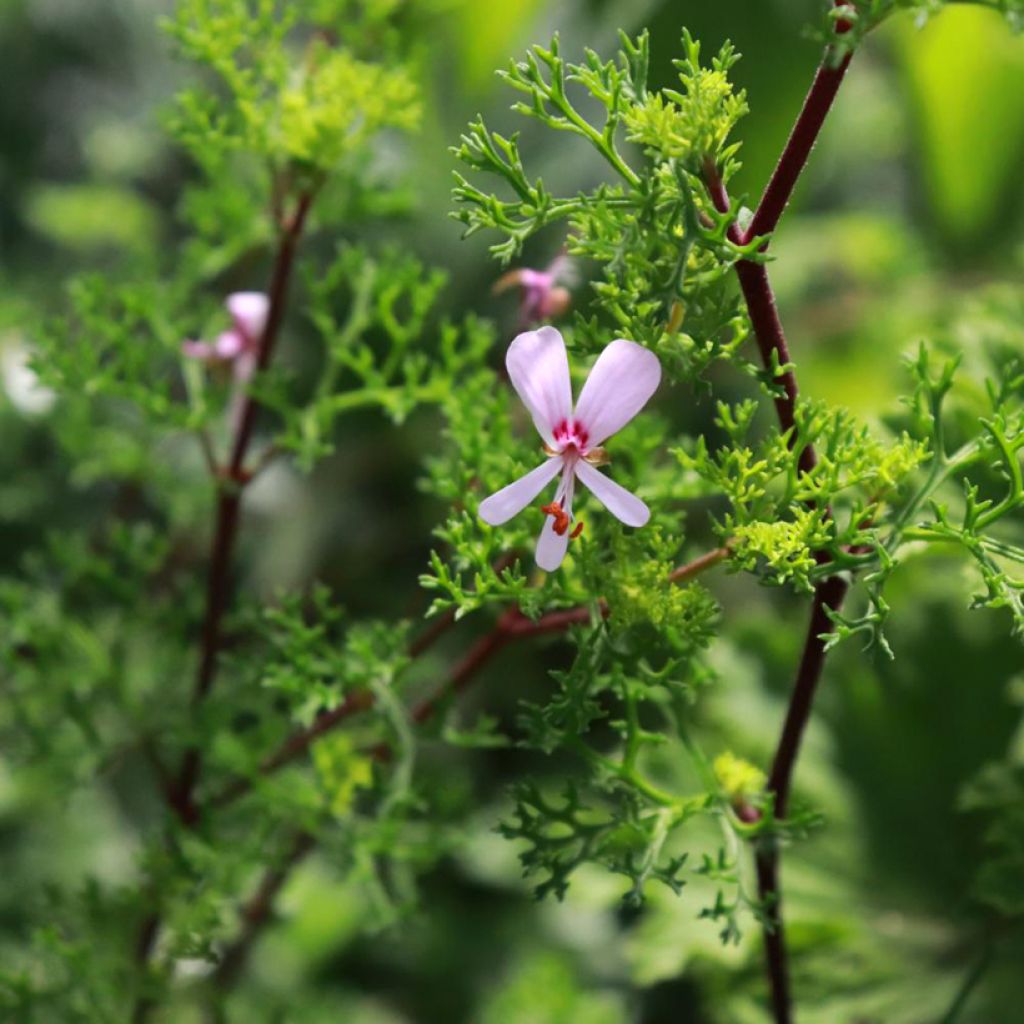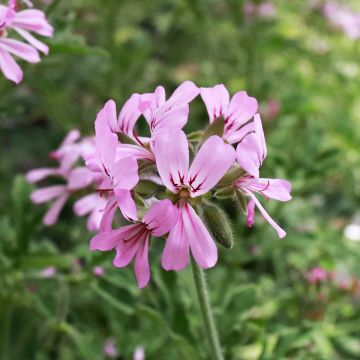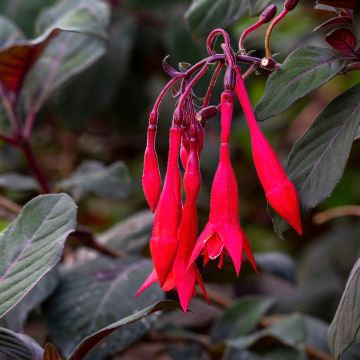

Pelargonium fruticosum - Géranium botanique odorant
Pelargonium fruticosum
Pelargonium fruticosum
Wild Malva, Woody Cranesbill, Shrubby Geranium
Special offer!
Receive a €20 voucher for any order over €90 (excluding delivery costs, credit notes, and plastic-free options)!
1- Add your favorite plants to your cart.
2- Once you have reached €90, confirm your order (you can even choose the delivery date!).
3- As soon as your order is shipped, you will receive an email containing your voucher code, valid for 3 months (90 days).
Your voucher is unique and can only be used once, for any order with a minimum value of €20, excluding delivery costs.
Can be combined with other current offers, non-divisible and non-refundable.
Home or relay delivery (depending on size and destination)
Schedule delivery date,
and select date in basket
This plant carries a 6 months recovery warranty
More information
We guarantee the quality of our plants for a full growing cycle, and will replace at our expense any plant that fails to recover under normal climatic and planting conditions.
Would this plant suit my garden?
Set up your Plantfit profile →
Description
The Pelargonium fruticosum, which could be translated as shrubby pelargonium, is a South African botanical species that forms a well-branched shrub, recognisable by its particularly fine, crisped, parsley-like foliage that releases a fragrance when crushed. This pelargonium is also characterised by its mahogany branches and small pale pink flowers with dark pink markings. Although not widely cultivated, it is a relatively easy plant to grow that charms with its light and refined yet original appearance. Provide it with sunlight and a light, fertile soil that is neither too acidic nor too alkaline. It is a drought-resistant species but sensitive to cold, so it should be grown in a pot anywhere but the Mediterranean coast.
The Pelargonium fruticosum grows in the south of the Cape province of South Africa, from the coast up to 100 km (62.1mi) inland, from sea level to an altitude of 1500 m (4921ft). Therefore, it is a species capable of adapting to a fairly wide range of climates. It can withstand short freezes of around -4°C (24.8°F) and is well-suited to drought. It is found in moderately humiferous soils with a neutral to slightly acidic pH. This Pelargonium fruticosum is a small shrub with a variable habit, more or less upright or prostrate depending on the growing conditions. Ultimately, it reaches a height of between 45 and 80 cm (18 and 32in). Its branches are green when young, then turn reddish-brown and become woody at the base. The leaves, leathery and slightly fleshy, are intensely divided into 3 leaflets with very narrow segments. Their lamina is covered with sparse, glandular hairs that contain a fragrant essential oil. The colour of the leaves is a fairly light green, and the tips of the segments are often reddish. The flowering occurs from May to August, depending on the climate (in spring in the Mediterranean region). Each flower stem bears 1 to 4 small flowers. Each flower measures about 3 cm (1in) in diameter and consists of 5 petals. The petals are light pink to white, with the two upper ones larger and marked with a deep pink base.
The pelargoniums and geraniums, unlike the perennial geraniums we cultivate in our gardens, are frost-sensitive plants that can only be planted in open ground in frost-free coastal gardens. Elsewhere, they make excellent container plants that can be easily overwintered indoors from year to year. So, plant these fragrant pelargoniums in a place where you can touch them to savour the full range of their scents. Pelargonium fruticosum is a plant that perfectly withstands summer drought and requires very little maintenance, making it valuable for dry gardens by the sea.
Report an error about the product description
Pelargonium fruticosum in pictures


Flowering
Foliage
Plant habit
Botanical data
Pelargonium
fruticosum
Geraniaceae
Wild Malva, Woody Cranesbill, Shrubby Geranium
South Africa
Other Pelargonium - Geranium
View all →Planting and care
Plant your geraniums and pelargoniums in open ground after the last frosts, in a sunny position. You can also plant them in a pot placed in a sheltered location, which you will take out in May. If you plant them in open ground, wait until the frosts have passed. Fragrant geraniums require well-drained, but not necessarily very rich soil. Water moderately. In a pot, regular watering is necessary in summer, and it should be reduced in winter. You can keep your pelargoniums by bringing them indoors under a veranda or a cold greenhouse in winter. They can tolerate a light frost, but they will not survive the winter in the garden, except by the seaside.
Planting period
Intended location
Care
This item has not been reviewed yet - be the first to leave a review about it.
Similar products
Haven't found what you were looking for?
Hardiness is the lowest winter temperature a plant can endure without suffering serious damage or even dying. However, hardiness is affected by location (a sheltered area, such as a patio), protection (winter cover) and soil type (hardiness is improved by well-drained soil).

Photo Sharing Terms & Conditions
In order to encourage gardeners to interact and share their experiences, Promesse de fleurs offers various media enabling content to be uploaded onto its Site - in particular via the ‘Photo sharing’ module.
The User agrees to refrain from:
- Posting any content that is illegal, prejudicial, insulting, racist, inciteful to hatred, revisionist, contrary to public decency, that infringes on privacy or on the privacy rights of third parties, in particular the publicity rights of persons and goods, intellectual property rights, or the right to privacy.
- Submitting content on behalf of a third party;
- Impersonate the identity of a third party and/or publish any personal information about a third party;
In general, the User undertakes to refrain from any unethical behaviour.
All Content (in particular text, comments, files, images, photos, videos, creative works, etc.), which may be subject to property or intellectual property rights, image or other private rights, shall remain the property of the User, subject to the limited rights granted by the terms of the licence granted by Promesse de fleurs as stated below. Users are at liberty to publish or not to publish such Content on the Site, notably via the ‘Photo Sharing’ facility, and accept that this Content shall be made public and freely accessible, notably on the Internet.
Users further acknowledge, undertake to have ,and guarantee that they hold all necessary rights and permissions to publish such material on the Site, in particular with regard to the legislation in force pertaining to any privacy, property, intellectual property, image, or contractual rights, or rights of any other nature. By publishing such Content on the Site, Users acknowledge accepting full liability as publishers of the Content within the meaning of the law, and grant Promesse de fleurs, free of charge, an inclusive, worldwide licence for the said Content for the entire duration of its publication, including all reproduction, representation, up/downloading, displaying, performing, transmission, and storage rights.
Users also grant permission for their name to be linked to the Content and accept that this link may not always be made available.
By engaging in posting material, Users consent to their Content becoming automatically accessible on the Internet, in particular on other sites and/or blogs and/or web pages of the Promesse de fleurs site, including in particular social pages and the Promesse de fleurs catalogue.
Users may secure the removal of entrusted content free of charge by issuing a simple request via our contact form.
The flowering period indicated on our website applies to countries and regions located in USDA zone 8 (France, the United Kingdom, Ireland, the Netherlands, etc.)
It will vary according to where you live:
- In zones 9 to 10 (Italy, Spain, Greece, etc.), flowering will occur about 2 to 4 weeks earlier.
- In zones 6 to 7 (Germany, Poland, Slovenia, and lower mountainous regions), flowering will be delayed by 2 to 3 weeks.
- In zone 5 (Central Europe, Scandinavia), blooming will be delayed by 3 to 5 weeks.
In temperate climates, pruning of spring-flowering shrubs (forsythia, spireas, etc.) should be done just after flowering.
Pruning of summer-flowering shrubs (Indian Lilac, Perovskia, etc.) can be done in winter or spring.
In cold regions as well as with frost-sensitive plants, avoid pruning too early when severe frosts may still occur.
The planting period indicated on our website applies to countries and regions located in USDA zone 8 (France, United Kingdom, Ireland, Netherlands).
It will vary according to where you live:
- In Mediterranean zones (Marseille, Madrid, Milan, etc.), autumn and winter are the best planting periods.
- In continental zones (Strasbourg, Munich, Vienna, etc.), delay planting by 2 to 3 weeks in spring and bring it forward by 2 to 4 weeks in autumn.
- In mountainous regions (the Alps, Pyrenees, Carpathians, etc.), it is best to plant in late spring (May-June) or late summer (August-September).
The harvesting period indicated on our website applies to countries and regions in USDA zone 8 (France, England, Ireland, the Netherlands).
In colder areas (Scandinavia, Poland, Austria...) fruit and vegetable harvests are likely to be delayed by 3-4 weeks.
In warmer areas (Italy, Spain, Greece, etc.), harvesting will probably take place earlier, depending on weather conditions.
The sowing periods indicated on our website apply to countries and regions within USDA Zone 8 (France, UK, Ireland, Netherlands).
In colder areas (Scandinavia, Poland, Austria...), delay any outdoor sowing by 3-4 weeks, or sow under glass.
In warmer climes (Italy, Spain, Greece, etc.), bring outdoor sowing forward by a few weeks.



















































